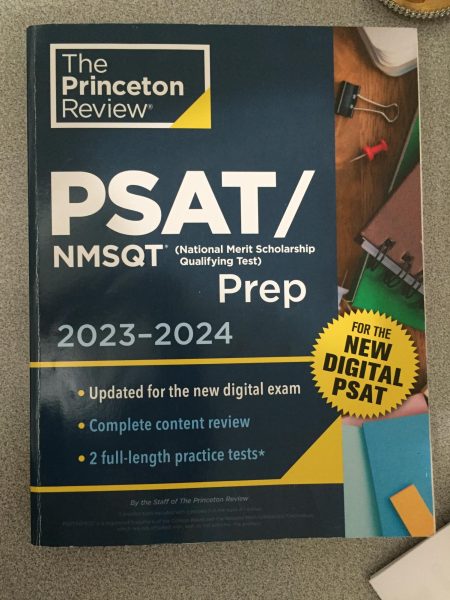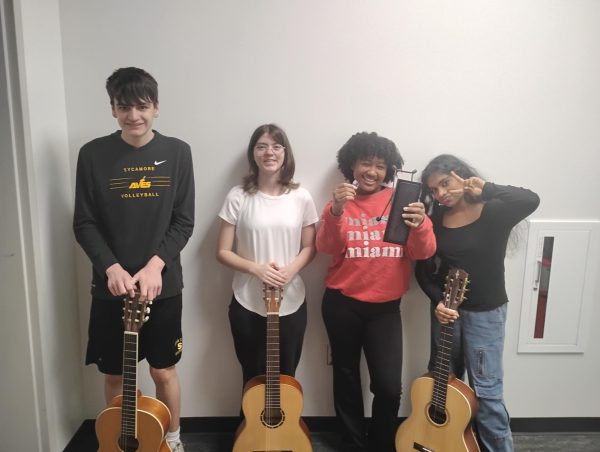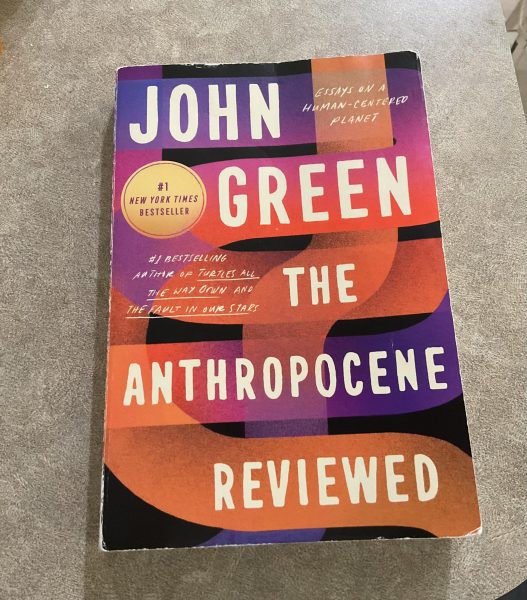Skwara leads Ohio Youth Climate Strike
Fri., Sept. 20 saw the latest major installment in a global youth uprising against legislators’ inaction on climate change.
Students from across Cincinnati walked out of school to converge in front of City Hall from noon to 2 p.m. to strike, calling for a Green New Deal and an end to government interaction on climate change.
The strike was planned and executed by a team of students working with a national grassroots network, the U.S. Youth Climate Strike, as part of a global day of action. In Ohio, strikes were also held in Columbus and Cleveland.
Below, senior Caroline Skwara, Ohio Climate Strike Lead, discusses what went into planning the strikes across Ohio, what is next for the youth-led climate movement, and how students can get involved.
Q&A with Caroline Skwara, 12, Ohio Climate Strike Lead
What happened at the climate strike on Sept. 20, and what was its purpose?
So last week at noon, we all gathered at City Hall in downtown Cincinnati. Our strike consisted of speakers and chants and a song led by one of the organizers. That was really cool. And also just a lot of people were holding up signs and there was lots of really good energy. There are, I mean, it was for a lot of different things—all of our demands are listed on the website. But some of that includes respecting indigenous lands and sovereignty, and demanding clean air and water for our communities, and calling for a Green New Deal, and making sure that we call attention to marginalized communities who are disproportionately affected by the climate crisis [as well as] corporations who are disproportionately impacting the climate crisis.
How did you get involved with the strike at the state level?
The U.S. Youth Climate Strike, the national organization, they organized everything. So they had a call-out for organizers, like, a little less than a year ago. So when that happened, I was like, “Hey, I’m interested.” And then everyone in, like, Ohio and Cincinnati got connected and just started planning stuff for the March and May strikes.
What was the planning process like?
The planning process was very long. We started at the beginning of the summer after the May strike. And a lot of it was, like, we had conference calls every Sunday night, which took a very long time. We’re just, like, a bunch of people who are super tired. Like, we’re all students, so it was exhausting. But we basically just, well, we also had to restructure our organization and get everyone to new positions, so it took a really long time. But a lot of it was just, like, group efforts and making sure everyone’s doing something and getting stuff done, like contacting speakers and getting permits where that was needed, and buying microphones and speaker sets or whatever we needed. So it was a group effort that took a very long time.
Do you think the Strike went as you wanted it to or as you planned it?
Yeah, I mean, in Cincinnati, our turnout was pretty great. We had, like, over 300 people, and we definitely expected a lot less than that. In Columbus, I think there were over 500 [attendees], and I don’t know what the numbers were in Cleveland. But yeah, that was pretty great—the turnout at least. And I know that when I was there, I was kind of really happy the whole time, because just like the energy of all the people was pretty crazy. And everyone was obviously really passionate about, like, protecting our planet. It was just really cool, and I think it was better than we could have hoped.
What happens now?
Well, we’re taking a little break at the moment, but [last week we had] our Week for Future events going on, but we were all so exhausted from planning, and our whole summer was spent doing this, so we’re all kind of just burnt out. We’re trying to take a little bit of time for ourselves, just, like, chill out for a while. But as soon as the next strike dates are announced by the national organization, we’re gonna go headfirst into planning that and bringing new people into organizing. The Week for Future was organized by a couple of climate organizations, like, in the world, and it’s basically… a week of events and action that are going to help us for our mission towards climate justice. And, like, the strike on Friday was the biggest part of that.
How do you hope that people will get involved with this campaign moving forward?
We’re hoping to make it easier to get involved and make sure that our website has, like, links to sign up for events and getting [in touch with] our organizing team. Because right now, it’s kind of—we just have group chats for each of the cities where we all plan stuff. So we’re hoping to make it easier. But right now, the easiest way to do that is to just get in contact with our organizers or fill out the form on our website and just tell us that you’re interested in organizing.
And what is your website?
Is there anything else you would like to say about the climate crisis in general or this movement?
I think that when we’re talking about climate justice and stuff, it’s really important that we’re not just talking about activists like Greta Thunberg, who’s obviously amazing, but [that] we’re also highlighting, like, the indigenous activists and a lot of other activists from communities that are disproportionately affected by the climate crisis, because a lot of those people have been doing the work for a lot longer with a lot less recognition. And that’s something that Ohio Climate Strike wants to focus on. And I think that’s something that’s really important when we’re, like, trying to focus on how to protect our future from the climate crisis.
Your donation will support the student journalists of Sycamore High School. Your contribution will allow us to purchase equipment and cover our annual website hosting costs.



![Mock Trial members from Gold and Green team last year pose for a picture in front of the OCLRE building in Columbus. "We all put in so much work [last] year. I know [this] year we’ll come back improved and ready to win!” said Ogunbodede.](https://shsleaf.org/wp-content/uploads/2025/10/IMG_4121-600x411.jpg)



